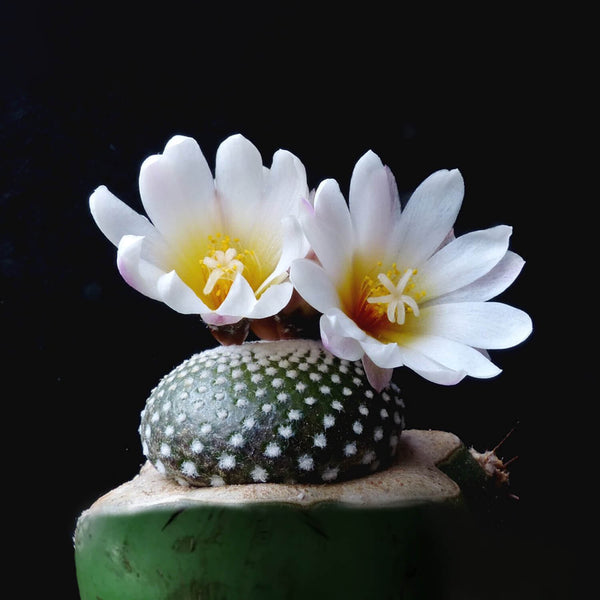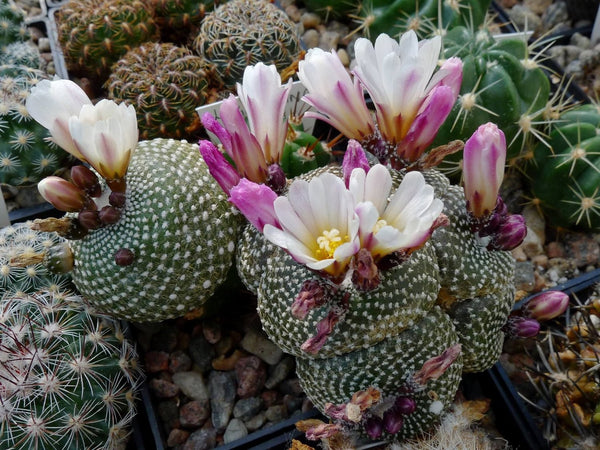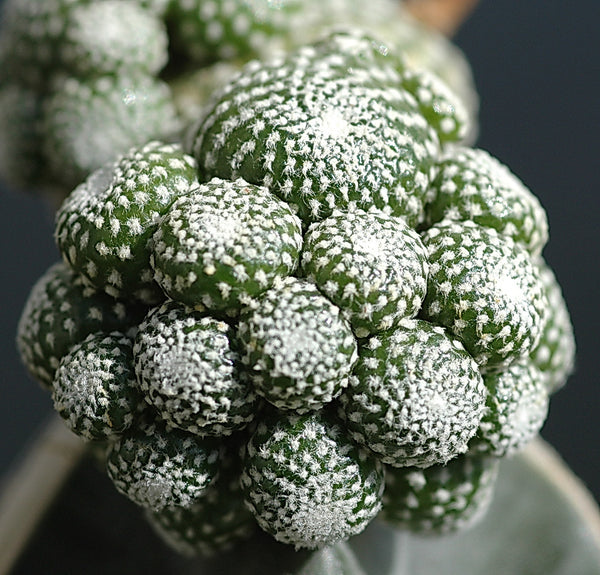Blossfeldia liliputana (Fechserii) - 20 seeds
Blossfeldia liliputana, is a solitary or clumping miniature cactus, with no rib and no spines. The smallest of all cacti and one of the most priced by impassioned, but rarely seen on its own roots in cultivation for any length of time. Blossfeldia liliputiana is the smallest cactus species in the world, with a mature size of around 0.5 inch (13 mm) in diameter.
HOW TO GROW?
The specialized environment of Blossfeldia liliputana (mountain rock cracks), and the extremely dry environment makes them very sensitive to root loss. Because of their slow growth rate, Blossfeldias are often grafted, which causes them to grow very fast and offset heavily but lose their characteristic disc-like shape, becoming quite globular and bloated. In this case, the minimum temperatures acceptable should take into account the requirements for the rootstock. Any way this miniature is grown, it is a true wonder of the plant kingdom.
Growth rate: very slow-growing unless grafted.
Soil: Grow it in a particularly draining substratum, as it is very sensitive to rottenness when in the presence of humidity and low temperatures, and let the soil dry out between waterings.
Repotting: Repot in the spring, when their roots become cramped. Generally, they should be repotted every 2-4 years in order to provide fresh soil. After repotting, do not water for a week or more. Use pot with good drainage. However, repotting doesn't necessarily mean they'll need larger containers.
Fertilization: It grows faster with a low nitrogen content fertilizer in spring and summer.
Watering: Water during the aestival growth cycle from March till October; the thin, fibrous roots suffer if there is humidity. Therefore the plant should be watered only when the surrounding terrain is dry, but it needs to be avoided wetting the bodies of these plants while they are in sunlight. A wet cactus in the sunlight can cause sun burning, which can lead to scares or even fungal infections and death. Keep dry as soon as the temperature starts dropping in October, and keep it perfectly dry in winter at temperatures from 5 to 15 degrees centigrade. Preferable not to water on overcast days, humid days, or cold winter days.
Hardiness: They need to be kept in a cool place during winter rest and can tolerate sporadic frost if kept on the dry side prior to, and during, cold weather with little danger of being killed (Frost Tolerance: At least -10°C). However, in cultivation it is better not to expose it to temperatures lower than 5° C, even if in an aerated and protected location. It tends to rot in winter during the resting phase if kept wet. In the rest period, no high atmospheric humidity.
Sun Exposure: Some shade with ample airflow is preferred for best appearance.






